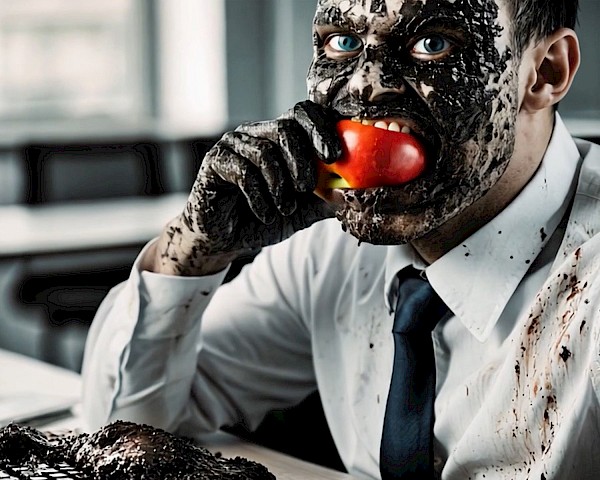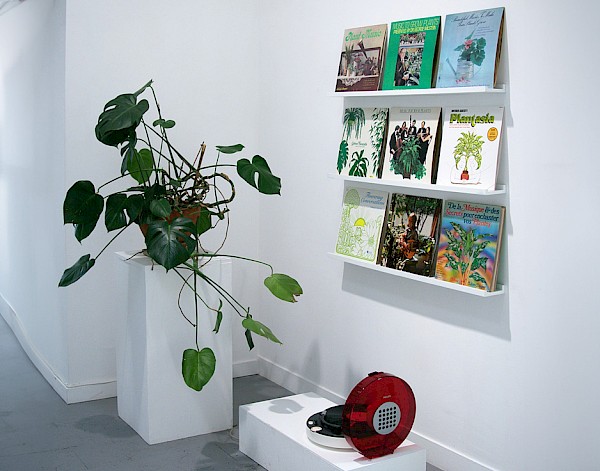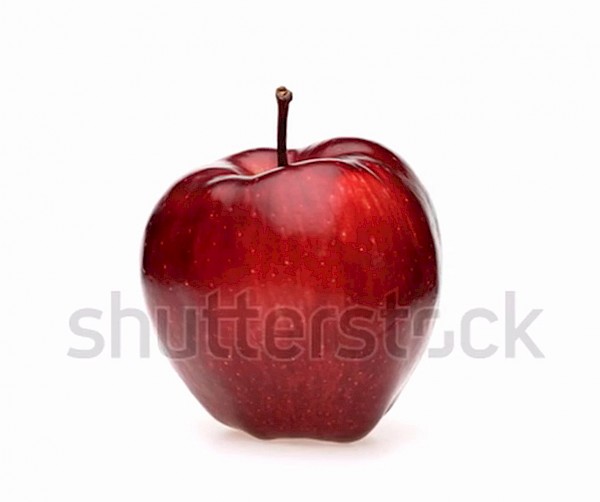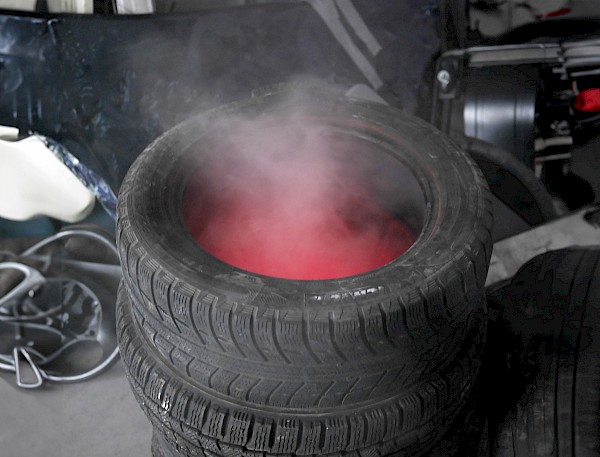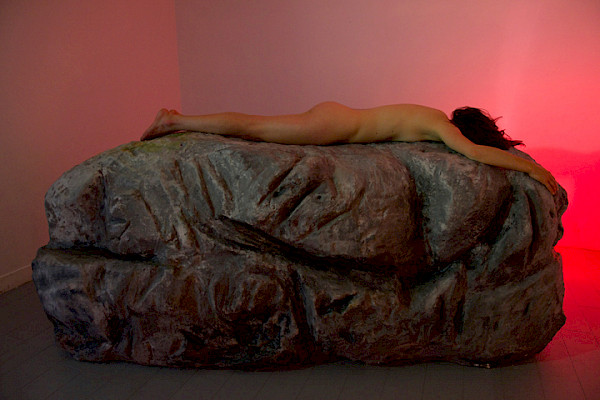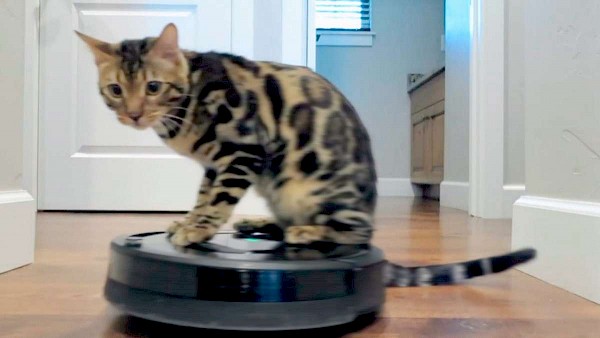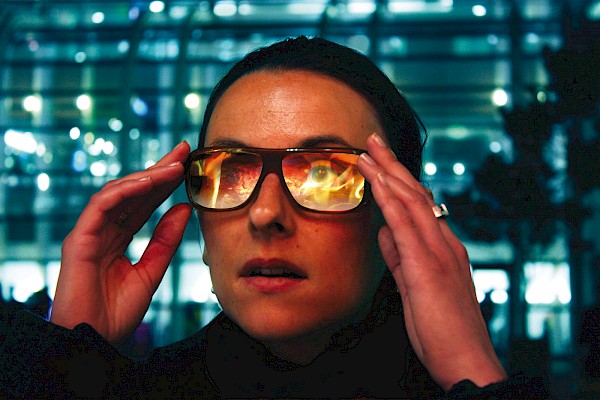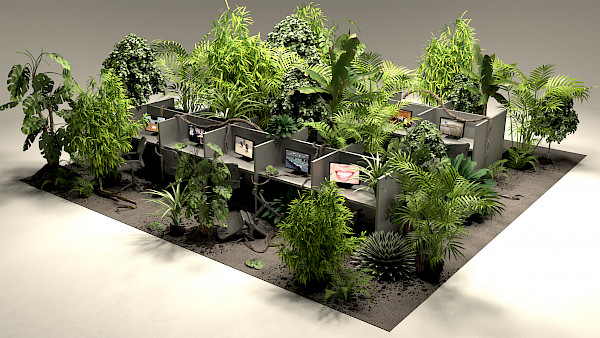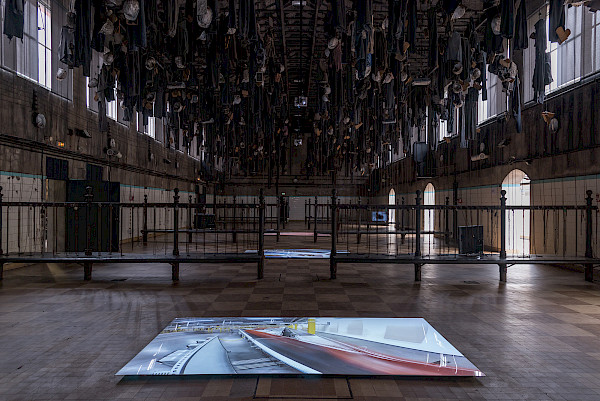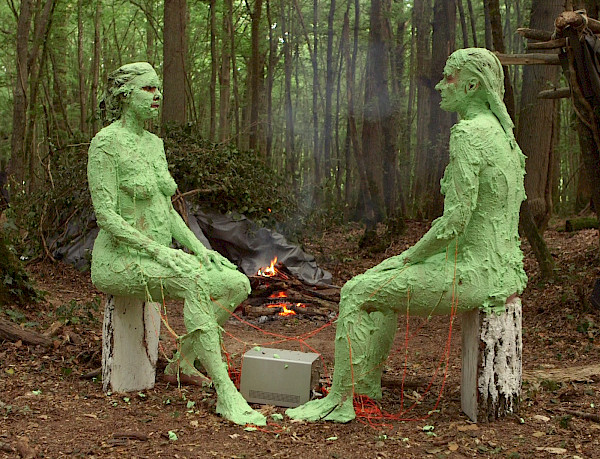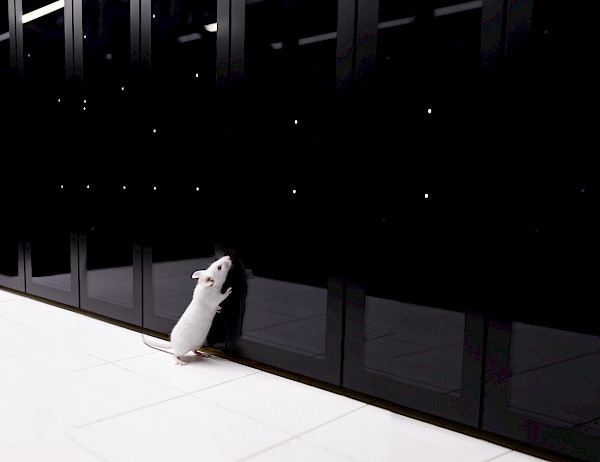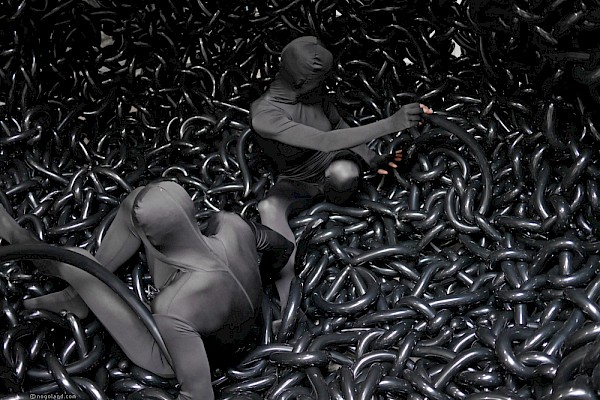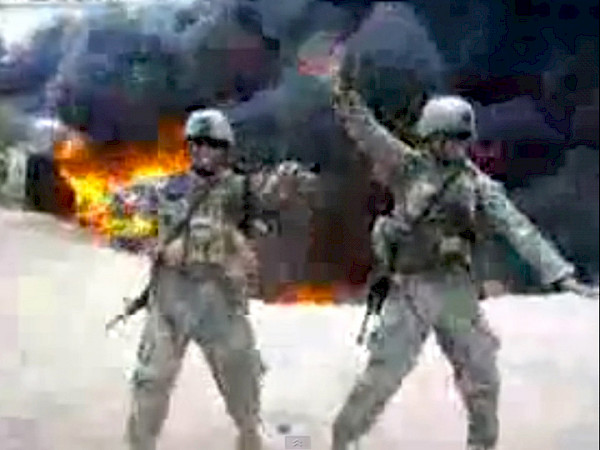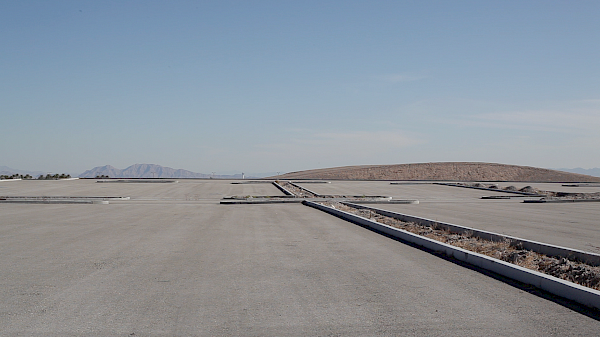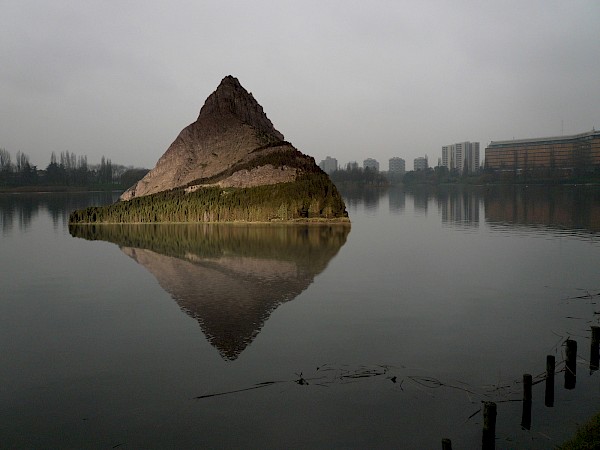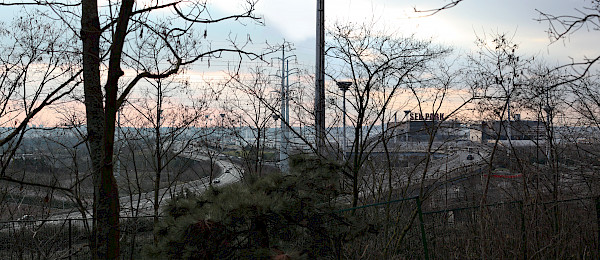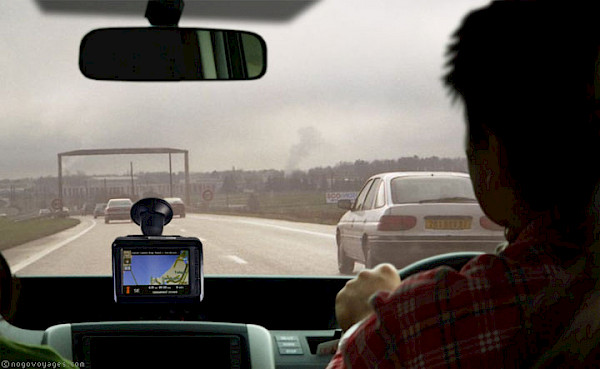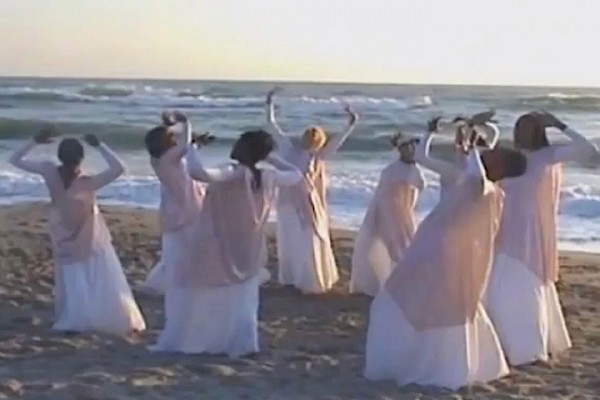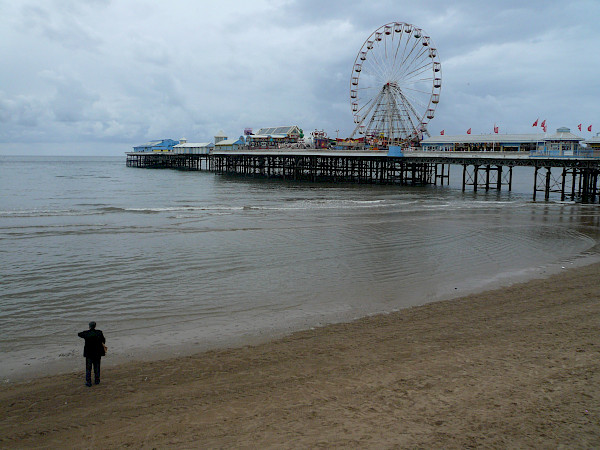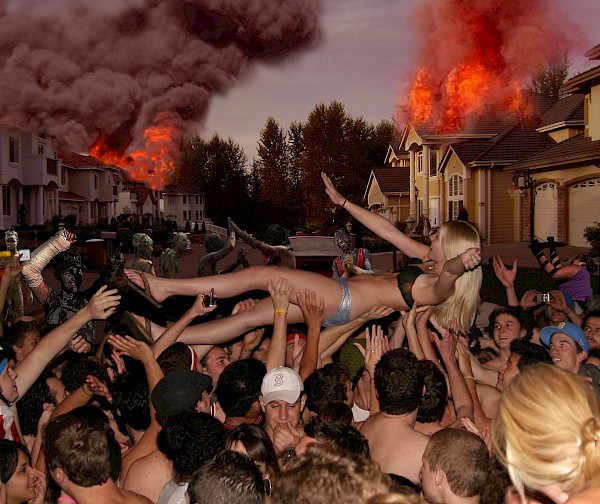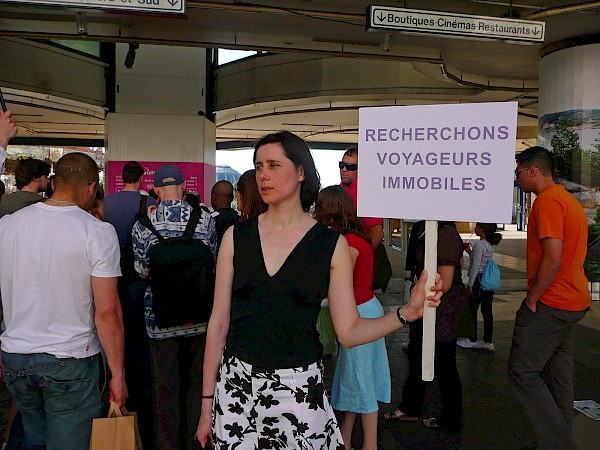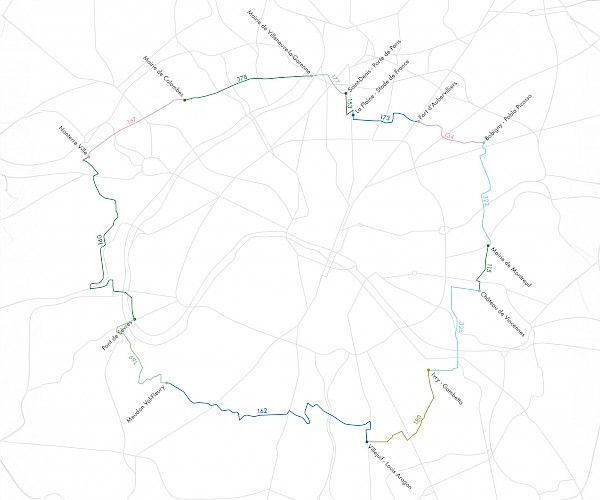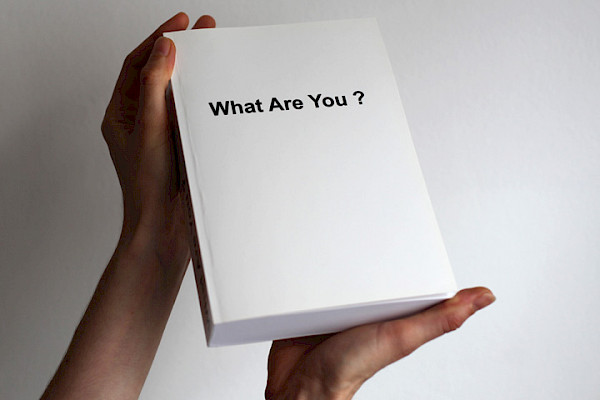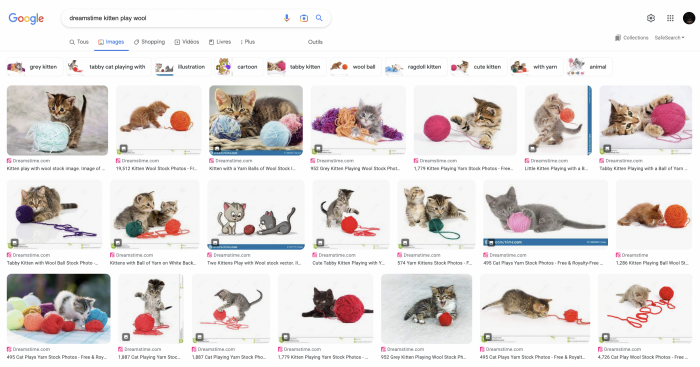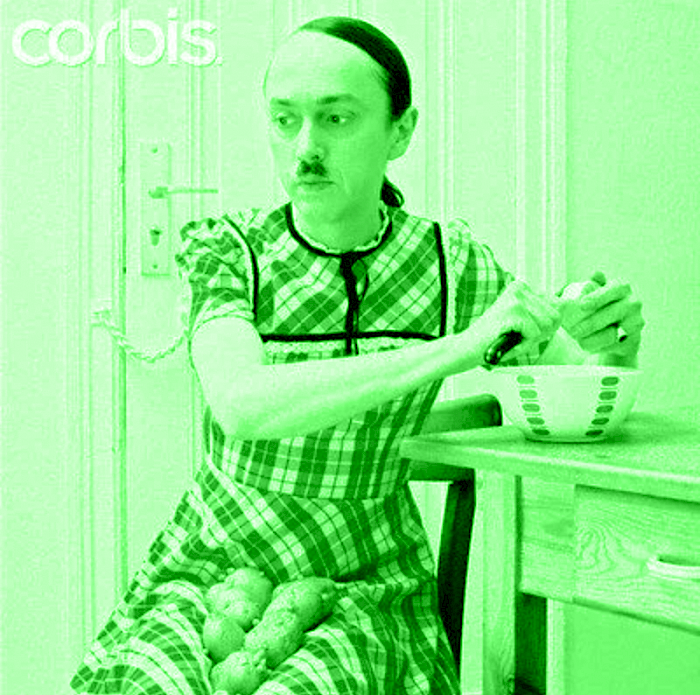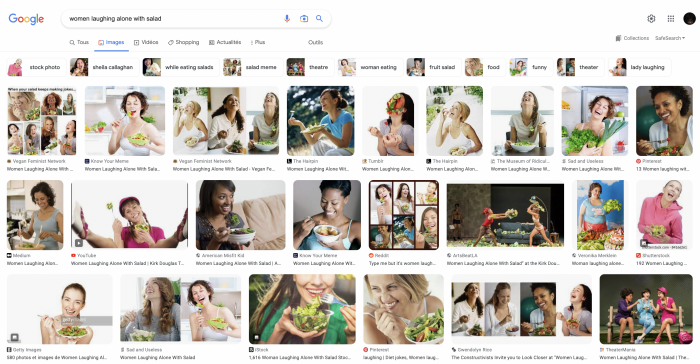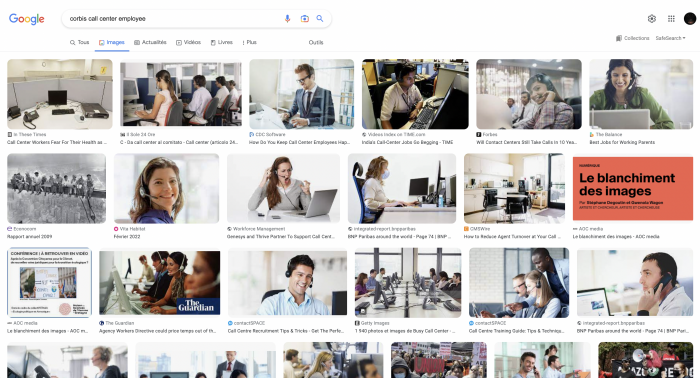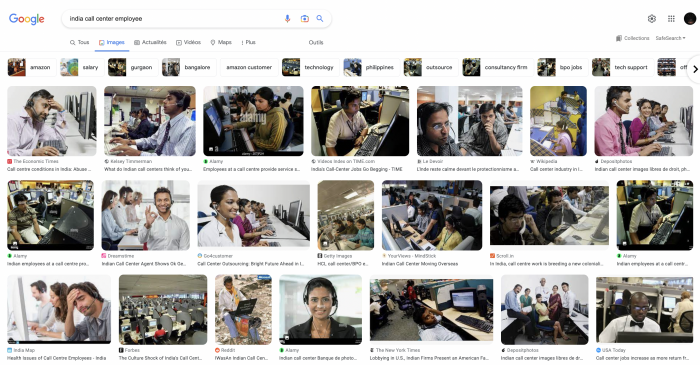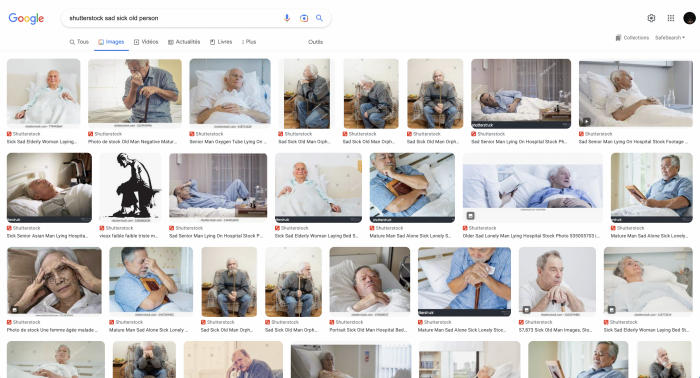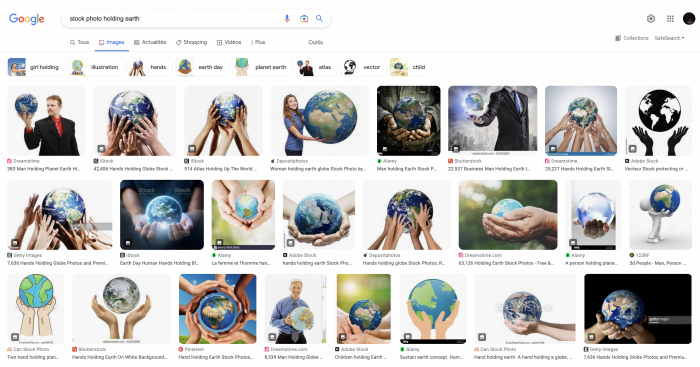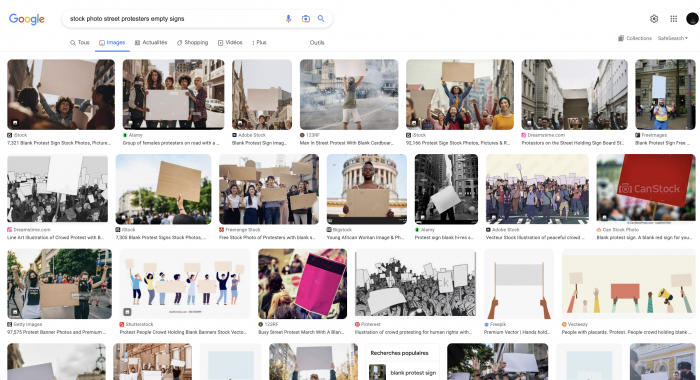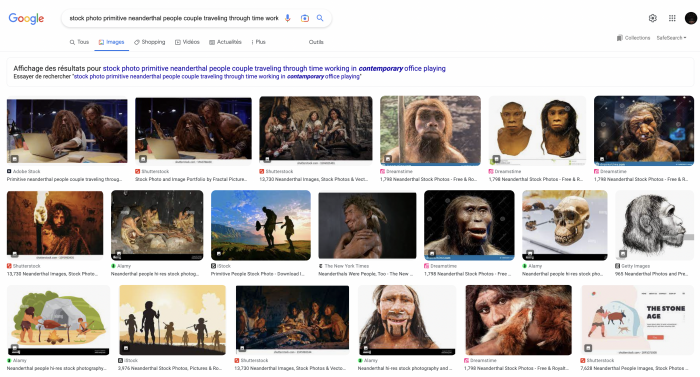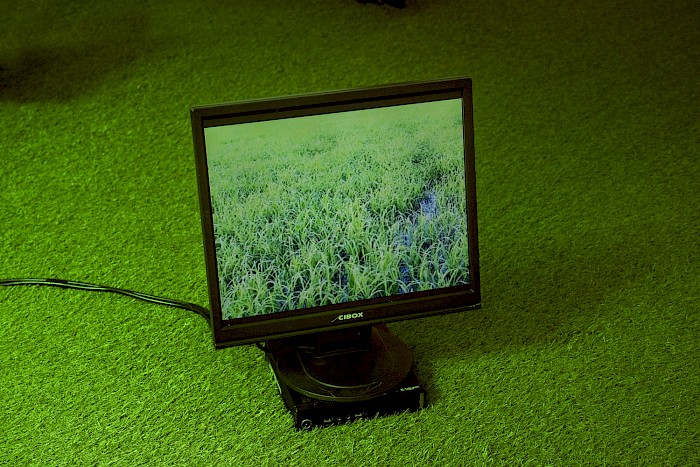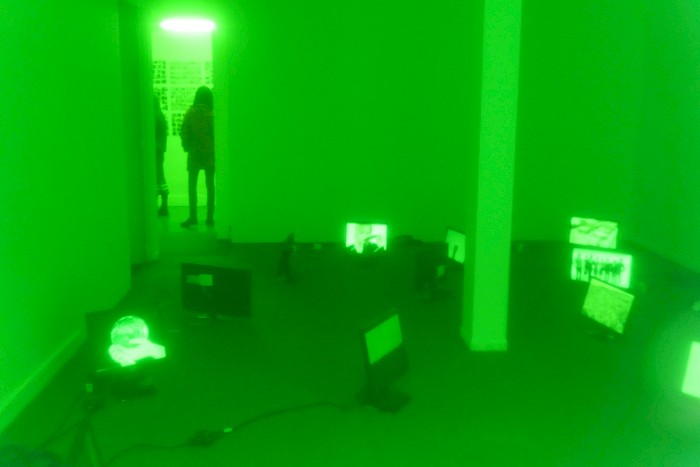Since they are so massively used, the microstock images obviously belong to the category of the "hegemonic technologies": from where the interest to to pay a little more attention to the imaginary that they convey.
The image that wishes you well
Article, installation and film
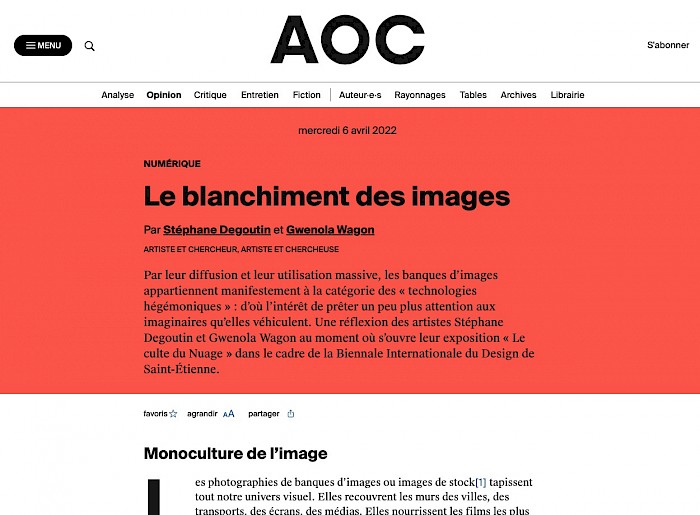
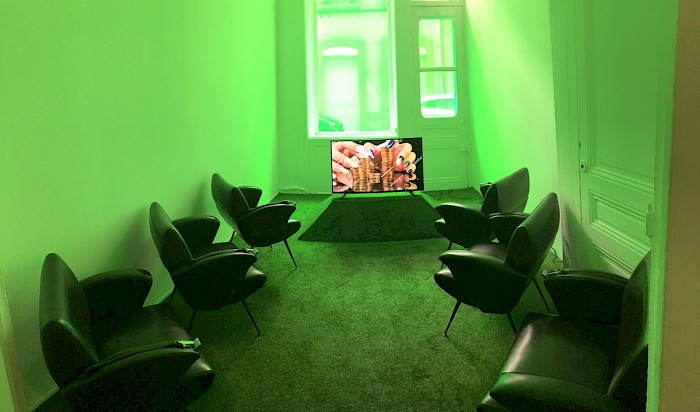
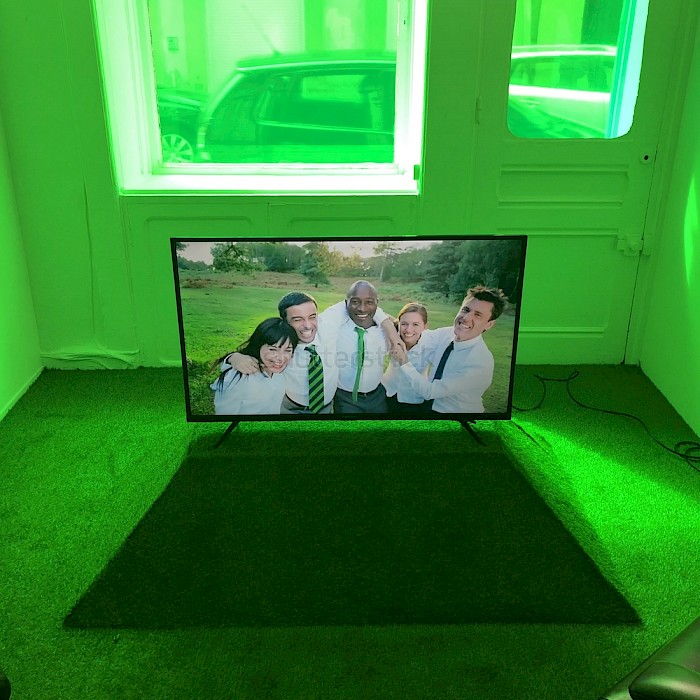


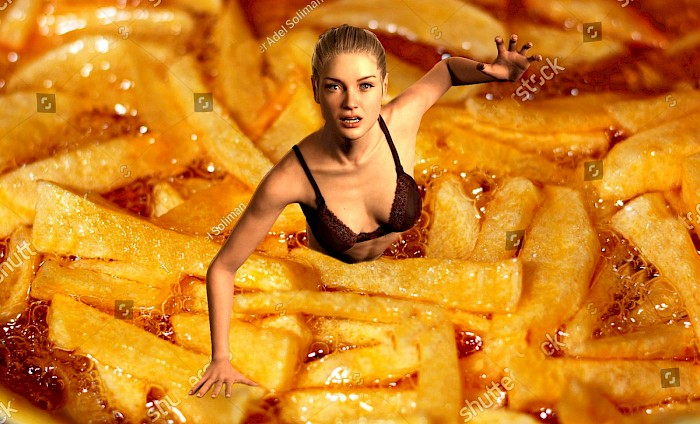

Monoculture of images
The photographs of image banks or stock images [1] cover all our visual universe: the walls of cities, transportation, screens, media. They feed the most diverse films, television documentaries, advertisements, magazines, corporate annual reports, "clickbait" articles, food packaging, high-tech product packaging, emails, memes, personalized greeting cards, construction sites, the sides of rental cars...
In the early 21st century, stock images suddenly became ubiquitous. With online distribution and the emergence of low-cost portals - or "microstocks" - such as Shutterstock, iStockPhoto, Dreamstime, Fotolia or Bigstockphoto [2], catalogs are growing in unprecedented proportions [3]. Photographs, drawings, 3D models and videos [4] are mass-produced and sold at knock-down prices (from 25 cents). Their massive use makes them omnipresent in our lives.
Hegemony
In 2021, the market leader, Shutterstock, offers more than one billion pieces of media, including 315 million photographs, a huge number of videos, illustrations and sound tracks. These impressive numbers are achieved through the same platform system that is behind the success of Uber, Airbnb or Deliveroo and that generalizes work by task - or "taskization".
The artist Aniara Rodado uses the expression "hegemonic technologies" [5] to describe systems - which are not necessarily digital or machine-based - that are imposed on everyone and everywhere, to the detriment of other forms of mediation. By their diffusion and their massive use, image banks clearly belong to this category: it is therefore necessary to observe in more detail the world that they depict.
Stock images seem to cover every possible field. They can illustrate situations that are perfectly harmless (an elderly person shopping, students listening to their teacher, a kitten playing with wool) or rarely represented (a person reading on the toilet seat, a drunken airplane pilot). Others give flesh to abstract ideas, such as creativity, often with the help of photomontages (a woman looking up and topped by a light bulb), anger (a man with an upset face, whose ears emit smoke), cooperation (several hands holding each other to form a circle).
Weird
Sometimes they are 3D models (the explanation of the blood circuit in the body, delivery boxes flying in the sky...) or metaphorical drawings (a stunted character wandering in a grey landscape). They can show places, like postcards (Venice, the desert, a dark alley...). Some are very strange, even burlesque. Many websites have fun listings of the most absurd ones [search for "weird stock photo"], like this photo of a man putting his hand through his computer screen and typing backwards while a surprised cat looks away, or this woman throwing spaghetti in a forest, or Adolf Hitler with potatoes and a picnic blanket as a dress [search for "corbis hitler potatoes picnic blanket dress"] [6], not to forget the now classic women laughing alone with salads [search for "women laughing alone with salad"] [7], which even inspired a New York dance show [8].
Genre
Yet, beyond the immense variety of subjects, a particular style emerges, a strangely recognizable character that is aesthetically obvious: "To see a stock image is [...] to know that you are seeing a stock image," as Megan Garber, author of an article on the "Tao of Shutterstock" in the American magazine The Atlantic, summarizes: "One of the more wacky/wondrous elements of stock photos is the manner in which, as a genre, they've developed a unifying editorial sensibility." [9]
Stock images thus form a genre. It seems that the authors of these images have discovered a universal vocabulary, a style of formidable efficiency, understandable by anyone, which suits any situation, allows to evoke everything, adapts to any subject. A style so efficient that it invades the graphic space, and tends to replace all other forms of visual language.
But why do we recognize at first glance that we are dealing with this particular genre? What exactly makes their singularity, their character? It is first of all a question of subjecting them to an aesthetic analysis, of observing them more closely in order to determine what their specificities are.
Apple
"If you are going to photograph an apple for stock, then strive to shoot the quintessential apple, the personification of applehood, the crispest, healthiest dang apple the world has ever seen. Anyone can drop an apple on a white background and shoot it, so your job is to rise above the rest and create an image that takes appleness to a new level. […] The angle it was shot at makes the fruit look like it is standing tall and ready for duty. The bright green leaf jutting off the stem speaks of freshness, as if it were just plucked off the tree. The skin is free of blemish and the reflection of light on the top just makes it shine. [...] Take that same apple (OK, not that same exact apple) and put it in the hand of a lovely young woman lying in the dappled sunlight of a late summer’s day, and you can still communicate a message of health or happiness"
Rob Sylvan, Taking Stock: Make money in microstock creating photos that sell, Peachpit Press, 2008 [search "istockphoto red apple with background"]
Team
"It’s a group of happy, smiling, youthful businesspeople. You can almost taste the sense of success and vigor this image projects! The group is representative of a modern, multicultural society—a positive image of inclusiveness. The image is simple in composition and uncluttered; simple sells. The models are looking directly at, and engaging with, the viewer. With nothing else going on in the picture, this draws the viewer into the image. It is shot on a pure white background. Images with pure white backgrounds, often called isolated images, are very popular as there is no color clash with the buyer’s chosen color scheme or background. […] The models are smartly dressed in sober and reasonably coordinated clothing."
Douglas Freer, How to Make Money from Your Digital Images, Focal Press, 2008 [search "fotolia business team"]
Tropes
The stock images are, indeed, extraordinarily numerous, but this mass conceals a striking amount of repetition of the same subjects, situations, and processes. Multiple photographers make similar and redundant contributions.
If one searches, for example, for a photo of a call center employee [search for "stock photo call center employee"], one will find thousands of faces in close-up, always smiling, on a white or light gray background, or in front of blurred glass partitions. None of the people photographed is a real call center employee. They are extras, hired for a studio session or for real shots in offices. They were dressed, made up and directed to play employees. They all wear the same accessory that signifies their job: a headset with a microphone. The suit and tie are de rigueur, the hair is neatly cut, the make-up discreet, the smile line is underlined by the curve of the microphone stem emerging from the headset. The personality of the model is erased by the accumulation of archetypes (over)signifying "call center employee". Everything has been done so that the understanding is immediate and devoid of ambiguity.
Had the photo been less generic, it would not have been as effective. To be convinced of this, you just have to visit one of the rare sites of royalty-free stock photos (for example Pixabay.com [search for "pixabay call center employee"]), supplied by photographers who do not fully master the codes of the genre. There are models with too particular faces (that one could imagine recognizing in the street), less appropriate clothes (a shirt with flashy stripes, or a size too big), backgrounds that are not neutral enough (a wallpaper), less harmonious lighting (with shadows that are too harsh), etc.
Now imagine an image of a real call center employee photographed at work - it could be found on Corbis.com [search for "corbis call center employee"]. The person would be less smiling, less made-up, dressed in a less entrepreneurial style, the setting would be less well-lit... This "real" image would convey a very different message: it would perhaps evoke a reportage, but it would not appeal to a journalist looking to illustrate an article, because it would not give the archetypal idea of the function. The smoother stock image does not describe a particular human being or situation, but communicates the qualities associated with that function: a smile, the aptitude to communicate, to listen, kindness... It can also communicate the opposite, by the way: stocks are full of photographs of grumpy, angry, poorly dressed employees, etc., which illustrate other tropes [10] [search "india call center employee"].
The emoji stage of the press photo
The common character of stock images would thus be the simplification, the reduction to the archetype: it is a question of expressing a situation in only one image, to make it in only one readable, transmissible and digestible movement within the devices of communication and publicity, for better inserting itself in the great productivist machinery: they are the photographic equivalent of the emoji.
Stock photographers create more readable narrative figures. The most effective ones - commercially speaking - act as magnets that draw people looking for illustrative images to them. The goal is for the customer to say, "Oh yes, that's exactly what I was looking for!" However, if this is what they were looking for, they already had the idea in mind.
In reality, they only translate, in the most direct form possible, images that already existed in the brain: the idea of a call center employee or any other subject. This is the world of reduction to the archetype. As the famous Holiday Inn slogan said in the 1970s: "The best surprise is no surprise".
Offuscation
There is an immense amount of stock photos showing call center employees, but this mass can be reduced to a small number of categories: smiling call center employees, obnoxious call center employees, sleeping call center employees, call center employees on lunch break, etc. Each of these categories contains many, many images - but they are interchangeable.
To use the example of smiling call center employees above, these photographs are generic because their message is broadly the same. But they could nevertheless be suitable for very different clients: a company wanting to highlight its after-sales service, a web designer looking to illustrate a page of a website, a journalist writing an article about a fire in an open space, a sociologist preparing a Powerpoint presentation on click workers, a pastor creating an inspiring poster, etc. The image will obediently lend itself to all these uses. A small number of interchangeable stereotypes can magically illustrate a great diversity of situations.
We would be hard pressed to describe any of the people in these pictures accurately. They are always different people, even if they look identical. In spite of the mass of images produced, nothing really allows us to read the singularity of the subjects, the people or the places - it is not useful for the message transmitted. We only retain the idea of these images: we identify the archetype, but we forget the singularity. The repetition effect of generic images is accompanied by a blurring effect. The singularity is lost in the multiplicity of the occurrences. To say it differently, the archetype invisibilizes the singularity.
This is its purpose.
There is a name for the strategy that consists, in order to conceal a piece of information, in melting it into a mass of similar information (rather than suppressing or disguising it, for example): it is offuscation.
As we will see in the remainder of this text, the aesthetic device of stock photography can be seen entirely as a device of concealment through offuscation. Something is hidden in the mass of images.
International style / Out of ground
Our species has developed on the surface of the globe a great variety of cultures, ways of eating, speaking, dressing, praying, expressing ourselves, creating...
Image banks reformat everything in their path: gestures, models' attitudes, facial expressions... and propagate a wave of uniformity that sweeps away cultural specificities. They illustrate what it means to live in a unified, sanitized, standardized world. We can see in them a worldwide reduction to a standardized way of life, a hyper-normalization. They spread automated propaganda: how should we live, or how do we imagine we should live.
Of course (is it even necessary to point this out?), the stock images present an immense over-representation of American models and behaviors. Ultra predictable, the image bank embodies the aesthetic that best fits the international style. In less than a century, this style has tumbled from sophisticated architectural fashion (Henry-Russell Hitchcock and Philip Johnson's exhibition at New York's MoMA, celebrating its birth in 1932) to Ikea's Billy shelf, which embodies the universal norm in a disposable version.
The international way of life is detached from the environment. It flattens everything in its path. It is offshore, off the ground: the equivalent of agricultural monoculture, or of the industry that produces the same thing from the North Pole to the South Pole, in Africa or in Asia... The monotonous way of life implies monotonous behaviors, like an international airport where we see our gestures and our attitudes constantly constrained. Like the airport, the stocks of images multiply the identical, seek neutrality, exoticize and ameliorate the real [11]. They propose the illustration of the most diverse activities of the human society, in an environment whose biodiversity would be reduced to landscapes composed of a single variety of grass.
Hygiene of the image
Another striking feature of stock images is their visual hygiene. Even those that depict unpleasant realities (war, murder, pollution, disease, demonstrations...) are made acceptable by professional lighting, high resolution, careful framing, and the syrupy movement of a system of norms and standards that turn everything visible into eye hygiene.
The war spills pools of blood with clear contours. The murderer and his victim present indifferent faces. Pollution remains clean. Illness does not take away the confidence of healthy actors [search "shutterstock sad sick old person"]. The demonstrations are emptied of all friction. The real is reproduced in studio with matching colors. Fake rebels, fake consumers, fake lovers, the extras clearly do not believe in what they are supposed to represent. Sex is devoid of eroticism [search for "shutterstock sex"]. Everything is as if defused.
This aesthetic that empties all action of meaning is very close to a candid imagery that could be associated with the advertisements of the 1950s, the illustrations of romance novels, the drawings of evangelical periodicals, the Catholic magazines of the 1930s or the educational visuals of school textbooks.
Novlangue
In the age of fake news and fact-checking, in an age that is being called "post-truth", it is intriguing that stock photographs do not arouse more interest among thinkers. Perhaps these images are thought to be too obviously false, naive, even ridiculous, to be of interest: how could they fool anyone? But they nevertheless produce an extremely pernicious vision of the world, which we know to be false but which we do not question. Too used to this type of false discourse, we accept it as is. The adjective "false" is probably too imprecise to describe their character. Even if we don't believe it, we pretend to. One could moreover qualify them globally as a waking dream.
This propaganda by the image, perhaps precisely because we do not perceive it as dangerous, reaches us much more surely and more immediately. Images, Mona Chollet reminds us in Beauté fatale (Fatal beauty), are "even more formidable [than words] because they sneak into the brain without our knowledge, preceding and thwarting any reflection, any critical approach. It is almost impossible to escape their bludgeoning".
Greenwashing
Take, for example, the many images that illustrate home delivery [search "shutterstock receiving delivery"]. Smiling, young, handsome, well-groomed, well-dressed, freshly showered delivery people carry clean packages to equally smiling customers. Everyone is smiling in every picture. These images are vicious, because they provide a kind of perverse morality, a morality of good intentions: "Look: what you are doing is wonderful! You do well to order your products, your meals!"
Of course, there is a gigantic off-screen here. The image says nothing about the conditions of production of the objects, the dirty synthetic materials, the transport in container ships, the working conditions of the deliverymen, the pollution generated by the overproduction... No recycling such as it is practiced today will be able to detoxify these objects, most of them useless.
In order to believe that our way of life is sustainable, in fact, we have to forget about extractivism, pollution, generalized delocalization, the uberization of work, neo-colonial and patriarchal domination...
Why do we forget so easily? How do we explain the mental disjunction between our way of life and the opaque, oppressive and massive systems on which it is based?
This forgetfulness is not magic, rather mere illusionism. Just as ecological anxiety is calmed by the superficial layer of ecology called greenwashing, the anxiety of the unpredictable is mitigated by stock images. They are used to spread clichés in the media about the evils of our world. By systematically replacing everything by its cleaned version, they form an immense cleaning device, which screens the real.
Holding Earth
In these images, which only preserve the surface of reality, which constantly assert themselves as false, nothing is unpleasant to look at, nothing is unbearable, nothing can account for the climate catastrophe in progress. These images contribute to making us forget everything that disturbs us, to replace it with a smooth and clean equivalent, a world where even the conflict is reduced to a simple surface [search "stock photo holding earth"].
Fake volunteers
On the subject of ecology, which stock images illustrate by the millions, there remains only the parade, the gesture, the symbol: smiling, multi-ethnic people wearing a "Volunteer" t-shirt and picking up trash on the beach [search for "stock photo smiling eco volunteer"], a woman with a broad smile wearing a green t-shirt decorated with a logo with three arrows arranged in a circle, sympathetic demonstrators holding up a "There is no planet B" sign, children painting ecological slogans, smiling grandparents throwing objects into the recycling bin and other attitudes that give the impression of being false. There is no planet B" sign, children painting environmental slogans, smiling grandparents throwing things into the recycling bin and other attitudes that falsely give the idea that everything is recyclable and washable, that everything can be repaired, making us forget the underlying drama of the climate crisis.
These images are meant to be neutral, purely illustrative. But this neutrality is an illusion. Vinciane Despret explains, in Penser comme un rat [13], the classic methodological error of the experimenter who believes it is relevant, when faced with a laboratory rat, to adopt a "neutral" behavior in order not to distort the experiment in progress. But, from the rat's point of view, does this neutrality exist? On the contrary, doesn't the rat find it surprising, even abnormal, that a living being places it in a strange situation and then, against all logic, remains silent? Doesn't the rat then modify its own behavior because of this incomprehensible attitude? The "neutrality" of the experimenter does not exist. He has deliberately placed the rat in a singular situation, and pretends to believe that it is neutral. But in reality, he is the only one to believe it.
The same is true of image banks. The emptiness they embody is not at all neutral: something is not present and that is abnormal. What is absent has indeed been removed. Far from being neutral, their aesthetics actually aim at masking all the problems. They practice a vast operation consisting in emptying of their substance all kinds of situations.
What is missing here, what is hidden, is simply the depth of reality. These images participate in an immense process of cleaning up reality. They are perfectly adapted to the communication of company, to the publicity, to the press... They are images which erased any form of responsibility of the message which they transmit. Because they all transmit a meta-message, always the same, highly harmful: the cancellation of responsibility. In the manner of the slogans of 1984[14] ("War is peace. Freedom is slavery. Ignorance is strength."), the stock photos wrap us in a novlanguage cleansed of evil and ugliness, where home deliveries manufacture a beautiful and smiling world, where waste sorting will save the world, and so on. They tell how society shows itself - how, through images, it tries to extricate itself from its contradictions, by a kind of volteface.
Crisis images
Image banks are part of this amnesiac chain. They contribute to a form of hypnosis, a ritual that consists as much in washing the brain, in ridding it of affects and in giving the impression that everything is light and volatile, that nothing is serious.
There are raised fists, fake demonstrations, young people brandishing signs (often empty, so that the buyer of the image can affix the slogan of his choice [search for "stock photo street protesters empty signs"]) ...
The ecology, but also the revolt, becomes a matter of aspiring models. The waste is beautiful and the demonstrations smiling. There is no questioning of a model of production or consumption, but rather of creating parades and masquerades.
One could see these fake actions as laughable nonsense, but the laughter is forced; because these images are used in all media and are used to illustrate articles all over the world that finally ridicule fights and empty them of their substance.
The particularity of these techniques of invisibilization, as we have seen above ("Offuscation") is that they do not consist in hiding, but on the contrary in showing a maximum of images emptied of all meaning, and which sink immediately into oblivion. Even their ubiquity participates in this annihilation: we no longer know where they come from, since they are found everywhere, they only circulate, such as this woman smiling in a green t-shirt, seen billions of times all over the planet, similar to a thousand other models who posed in the same attitude, whose t-shirts were perhaps blue or yellow, whose features were slightly different, whose smile was a little more pronounced or a little less convincing, but who embody the same message - and whose face we don't remember, and whose face we don't even remember having seen a few minutes after having crossed paths with them.
The number of images that deal with the ecological crisis forms a considerable stock. But these images that denounce a world in crisis are not going to save it because, ironically, the online storage and distribution of this ever-growing stock wastes a lot of energy.
These images are made to go unnoticed. The subject that they pretend to embody is also eclipsed. This may not be important when illustrating an article on the different ways of cooking an egg, but it raises questions when they deal with social issues, which they contribute to make forget. They proceed to an industrialization of amnesia.
In medicine, the word crisis designates the acute manifestation of a disease. Without crisis, the disease can sometimes remain invisible. But during a crisis, it imposes itself on the eye: what was latent becomes manifest. The various processes of invisibilization prevent the latent from becoming manifest. They prevent the crisis from exploding. What is washed away is deactivated.
Ecstatic and self-sufficient, the world of stock images gives the strange sensation of an infinity of materials to describe the world until thousands of years to come, a bit like if all these images exchanged in the servers did not need the real to represent us anymore.
The "textures and backgrounds" section proposes a journey through the macros of chips, French fries, popcorn, oil, pistachios, chocolates, ice cream, cassoulets, mayonnaise, whipped cream, vegetable veins, steaks, sausages, citrus fruits, molds, cracks, plastics, bacteria... All these materials are destined to melt progressively in the open mouths of countless men and women ingesting all kinds of food.
It is tempting to end this tour with the "cannibal" section of the image stock, contemplating businessmen and women in telecommuting: some are naked in waterfalls, others devour each other. The "prehistoric future" section, on the other hand, shows humans dressed in animal skins, brandishing mammoth bones as they emerge from their caves into an open space and rave about the stock images displayed on their laptops [search for "primitive neanderthal people couple travelling through time working in contemporary office playing with gadgets interacting new things"].
_
Footnotes
[1] In this article, the aim is to analyze what are called "microstocks" (see below).
[2] All of them were created in the 2000s, and are the successors to the more expensive Corbis (created in 1989) and Getty (created in 1995) conglomerates, which specialized in news photos and historical images.
[3] The massive recourse to stock images also coincides with the increasing complexity of image rights and the heterogeneity of licenses depending on the country, which makes it difficult for publishers and users to do business. The purchase of stock images is a way to protect oneself from any risk.
[4] Here, we will focus more specifically on photographs.
[5] In his doctoral thesis, currently being written.
[6] These examples are taken from the compilation: "50 Weirdest Stock Photos You Won't Be Able to Unsee.
[7] See also the Tumblr "women laughing alone with salad".
[8] Sheila Callaghan, Women Laughing Alone with Salad.
[9] Megan Garber, "The Tao of Shutterstock: What Makes a Stock Photo a Stock Photo? And how do photographers know that I'll need a picture of the sun streaming through clouds?" , The Atlantic, May 18, 2012.
[10] The word is used here in its English meaning, to designate a recurring figure, whether it is a narrative process, an image or a cinematographic motif.
[11] AMELIPOULANATE v. tr. derived from Le fabuleux destin d'Amélie Poulain. To show life as if it were a postcard. Syn.: self-exoticize.
[12] Mona Chollet, Beauté fatale. Les nouveaux visages d'une aliénation féminine, La Découverte, 2012, p.34.
[13] Vinciane Despret, Thinking like a rat, Quae, 2016.
[14] George Orwell, 1984, Secker and Warburg, 1949.
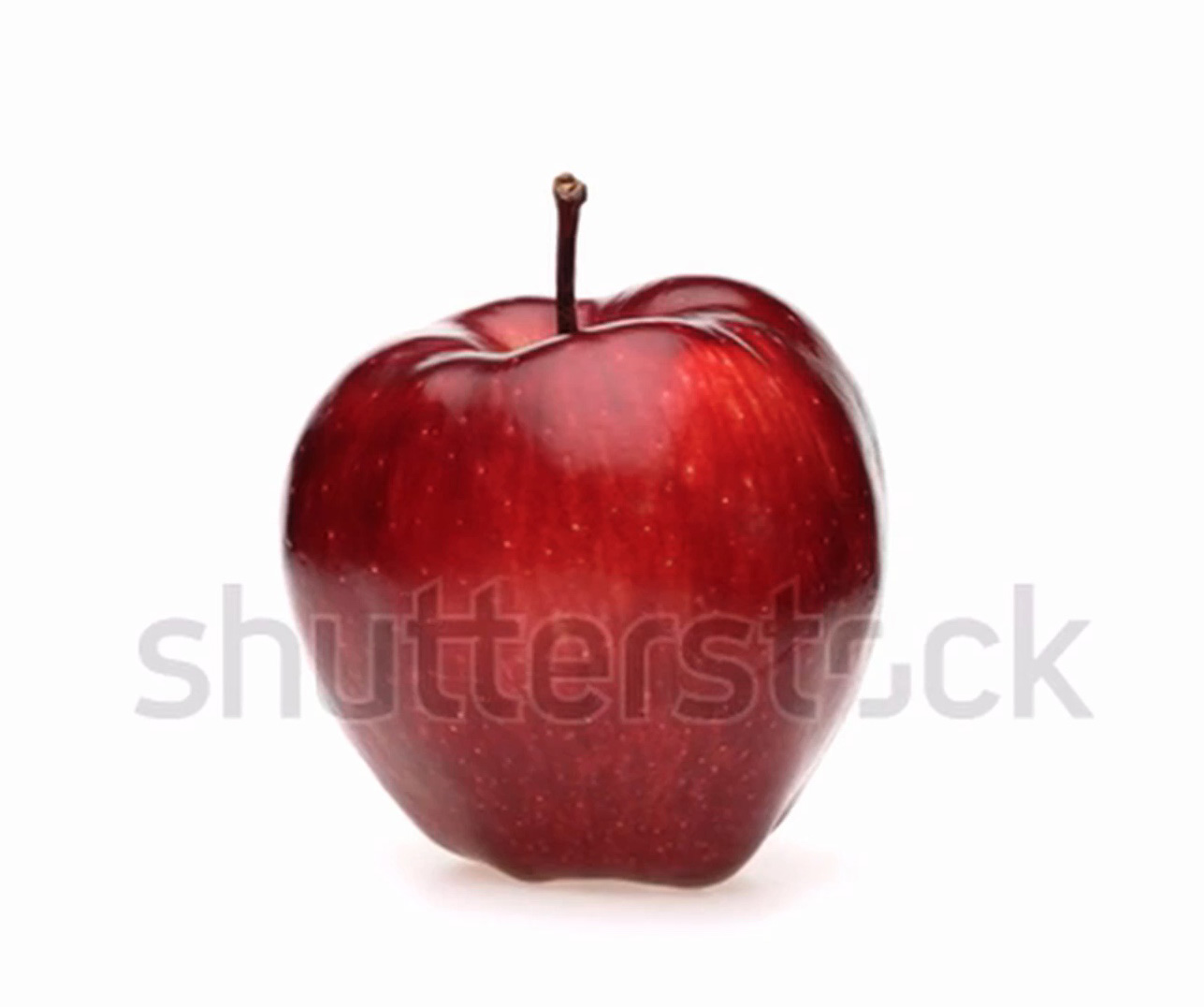
Press
Christian Salmon, Le monde que nous vendent les banques d'images est terrifiant, Vice, 7 octobre 2022
Diffusion
"Le blanchiment des images" (Imagewashing), lecture-performance, festival ADD, Zoo galerie, Nantes, june 2, 2022
Le culte du nuage exhibition, Les Limbes, Saint-Étienne, 7-30 april 2022
Article Le blanchiment des images (Imagewashing), AOC, 6 april 2022
Credits
Editor : Océane Ragoucy for AOC magazine
Production : Les Limbes, Akim Pasquet
Voice over : Inès Besson
